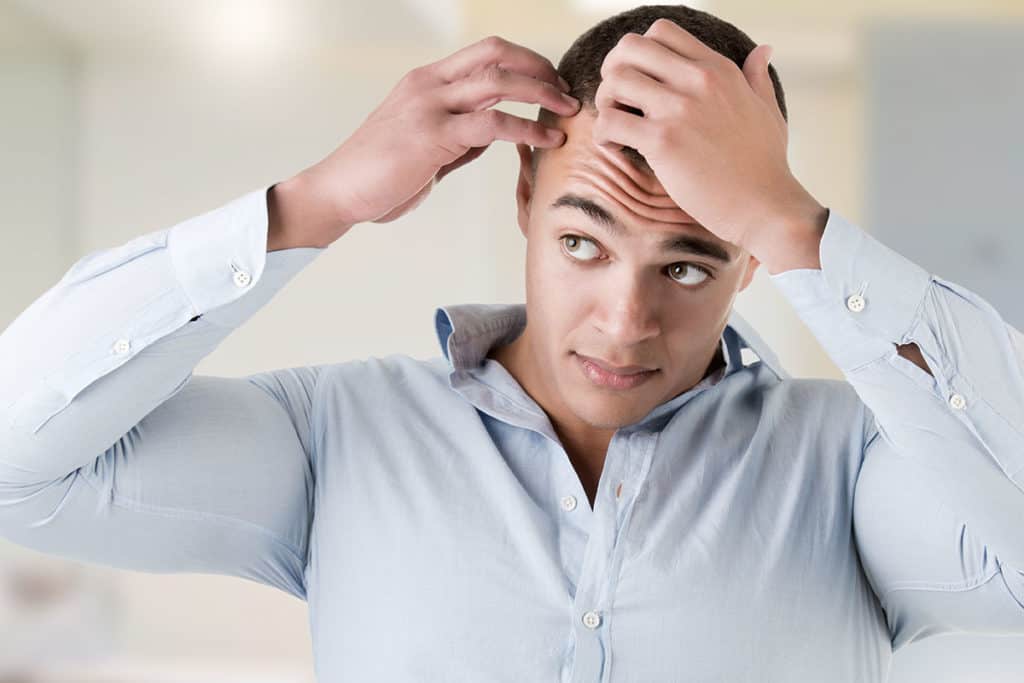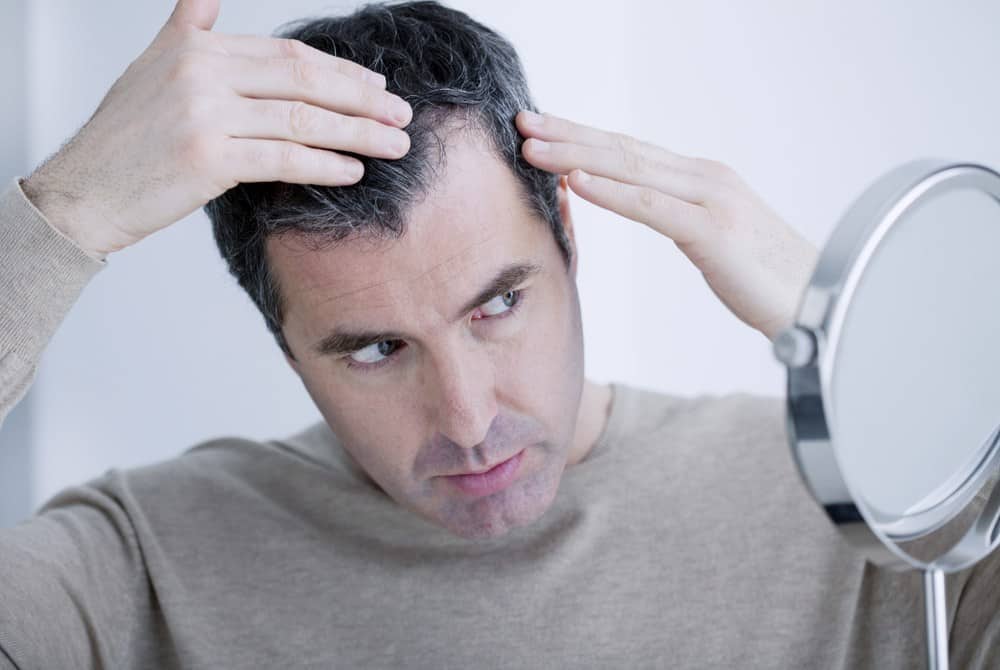Male hormones are considerably different than female hormones, and male hormones bring out male physical characteristics. It is our androgens that make us appear different than women, in terms of breasts, hips and body shape. Hormones cause significant growth all over the body in men, while women grow much less hair on theirs. Androgens also affect the growth rate of hair on males and there has been a great deal of research that attempts to discover the speed with which hair grows on men compared to women.
So, does men’s hair grow faster than women’s. Typically men’s hair grows faster than women’s hair does. However, there are variables, such as whether a women is pregnant (which tends to speed up hair growth) and the time of year (hair grows faster in summer than winter).
We are beginning to discover the reasons for these differences between the sexes and science and our understanding of human evolution and survival have given us answers that will no doubt surprise you. We first need to know more about our male hormones.
Note that there are other hair studies which suggest that men’s hair does not grow faster than women’s, even though men and women are different on the genetic level. Hair grows an average of a quarter to a half inch a month on both men and women; due to the fact that men’s hair is shorter than women, hair growth is more noticeable on a man than on a woman. However, men have more testosterone than women, and testosterone is responsible for hair growth. So is there a difference? We need to know a little more about androgens and the endocrine system and their impact on our hair.
Table of Contents
What are Androgens?
Androgens are responsible for the growth of the male body and male characteristics, such as muscle mass, sex organs and hair. Androgens are what makes gives us maleness. Testosterone is the androgen responsible for hair growth on the male body and is the most significant. Females have testosterone as well, but at much lower levels.
Hair follicles underneath the scalp are influenced by androgens and control the speed at which hair grows and how long hair will be. In mammals, melanocyte stimulating hormones are the primary cause of hair growth.
DHT, a male hormone five times more powerful than testosterone, can have a negative impact on hair growth and is thought to be responsible for baldness.
Studies have shown that the thicker and coarser hair is, the longer it can grow. Thin, fine hair noticed when young will likely thin out as we age and lead to early hair loss on the scalp.
It’s been theorized recently that hair growth differences in men and women are found on the genetic level, so that some men grow hair faster than women, but some women, because of their DNA, grow hair faster than men. The difference then is not sex-specific. That means that testosterone doesn’t play a role in how fast hair grows, but instead focuses only on hair thickness.

Women’s hair is naturally softer than thicker and coarser men’s, hair. Women can have hair that is denser than men as well, but each male hair strand is thicker than a single female hair strand. Despite thicker hair strands, men tend to grow bald while women usually keep a full head of hair throughout their lives.
Why Do Men Grow Bald?
Both men and women lose about 100 strands of hair each day, as part of a repeating cycle of hair loss and hair replacement. At some point, though, men will lose more hair than they replace on their head and will eventually notice are on their heads that is either thinner or completely bald.
Most men (upwards of 85%) will have some hair loss that is noticeable. We mentioned DHT, a powerful male hormone linked to testosterone. It is believed that DHT, over time, causes hair follicles to shrink. So, when hair grows back through the hair follicle, it is thinner and finer. As men age, the follicles shrink to a point where no hair strands can pass through them.
Other factors can cause the production of DHT, which will, in turn, cause hair follicles to become narrower.
- Stress
- Diabetes
- Infections of the scalp
- Hair being pulled
- Ponytails (pulling on the hair)
- Not enough iron in the diet
- Anabolic steroids (used to grow muscle mass)
- Thyroid diseases
These conditions, or the way you personally treat your hair, aren’t the only determining factors for hair loss. Genetics plays the most significant role regarding our appearance and how much hair stays.. If a parent developed baldness, there is a better chance that their offspring will also have thinning or balding hair.
The recent discovery of stem cells used in research has given us better theories about hair loss. It is now believed that stem cells located on the scalp that are unable to grow cells that make hair follicles. Whatever the reason, there are treatments for hair loss today. Some of these treatments work to an extent. Hair restoration isn’t an exact science, but some do have more successful results over time than others. Let’s take a look at some of them
Which Hair Restoration Methods Have been proven to Work?
Medical treatment short of hair transplantation is not guaranteed to be 100% effective. However, as the science behind hair loss is better understood, products will be increasingly effective..
- Minoxidil and Finasteride
Minoxidil and Finasteride (marketed as Rogaine and Propecia respectively), are the only two drugs approved by the FDA for treating hair loss. Minoxidil is available over the counter or by prescription and is a topical get that’s applied to the bald parts of the scalp. Its effectiveness is still below 15%. However, (and this will sound confusing), almost 75% of men who used minoxidil claimed that the drug improved their hair density. Hair density means how many strands of hair grow in any given square inch on the scalp.
Then bottom line is that millions of men use minoxidil and have been using it for the past twenty years. Results vary and there are hundreds of opposing claims as to its effectiveness, so the best way to know is to try it for yourself.
Finasteride yields somewhat better results and requires a prescription from a doctor. It is a pill rather than a topical liquid. However, stopping the drug will cause hair loss to resume.
Interestingly, a man can take both minoxidil and finasteride at the same time. One is a pill and the other is a topical liquid, so it seems to make sense that millions of men take them simultaneously.
How do Finasteride and Minoxidil Work?
Finasteride prevents loss of hair by preventing testosterone form converting to dihydrotestosterone (DHT that was mentioned earlier). There is a proven link between production of DHT and shrinking hair follicles.
The action of DHT is extreme and irreversible. Once the hair follicles get smaller, they don’t widen again.
This is where minoxidil comes into play. This drug is a vasodilator, which means it widens blood vessels in focused areas of the body. Interestingly, erectile dysfunction drugs such as Silfenadil work the same way: they open blood vessels near the genitals and promote erection.
Applying minoxidil to the scalp helps relax the walls of the blood vessels and allows blood to flow freely to the affected areas, especially the hair follicles. Wider blood vessels means nutrients can once again flow to the hair follicles. It is believed this will promote hair growth. Specifically, minoxidil promote growth, forcing hairs that are no longer growing to be replaced by new hairs that will grow in their place.
Results aren’t immediate, however. Both finasteride and minoxidil will begin showing results after time. In most cases, the drugs begin yielding results after a year or so of use.
Which Hair Loss Drug Should I Use?
Since each man has different issues regarding hair loss, the best thing you can do is to consult a hair loss specialist, or your doctor if they know your personal health status extensively. Your doctor can either guide you to the right product or refer you to the best specialist for your case. Typically, Rogain has worked well for men over the years. It helps reactivate hair follicles to stimulate hair growth.

Have patience; results will not occur overnight. If you desire to replace your lost hair, consider trying one of these medications (or both at the same time), or consider hair transplantation. Always make informed decisions, because any of these approaches will alter your appearance in different ways.

